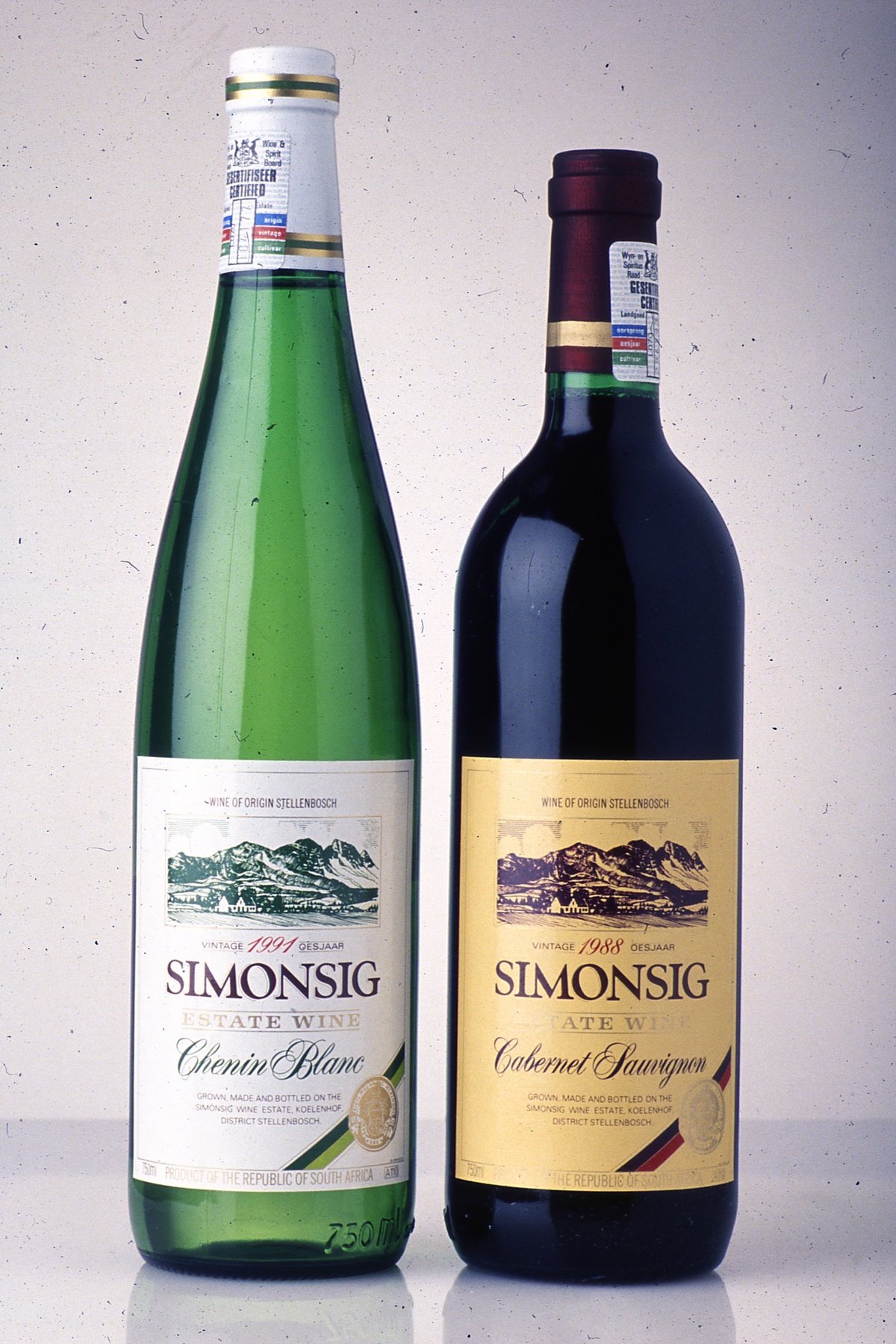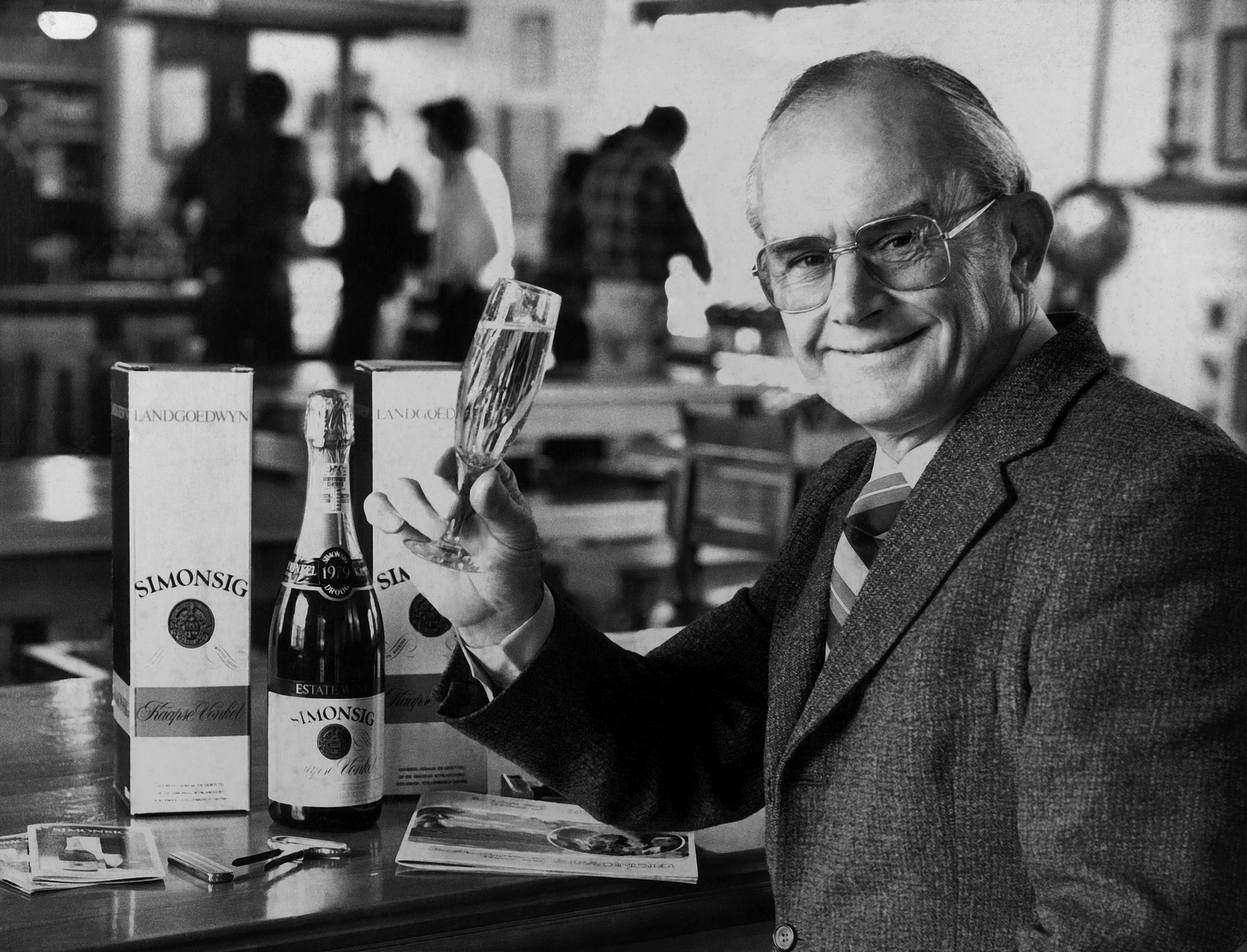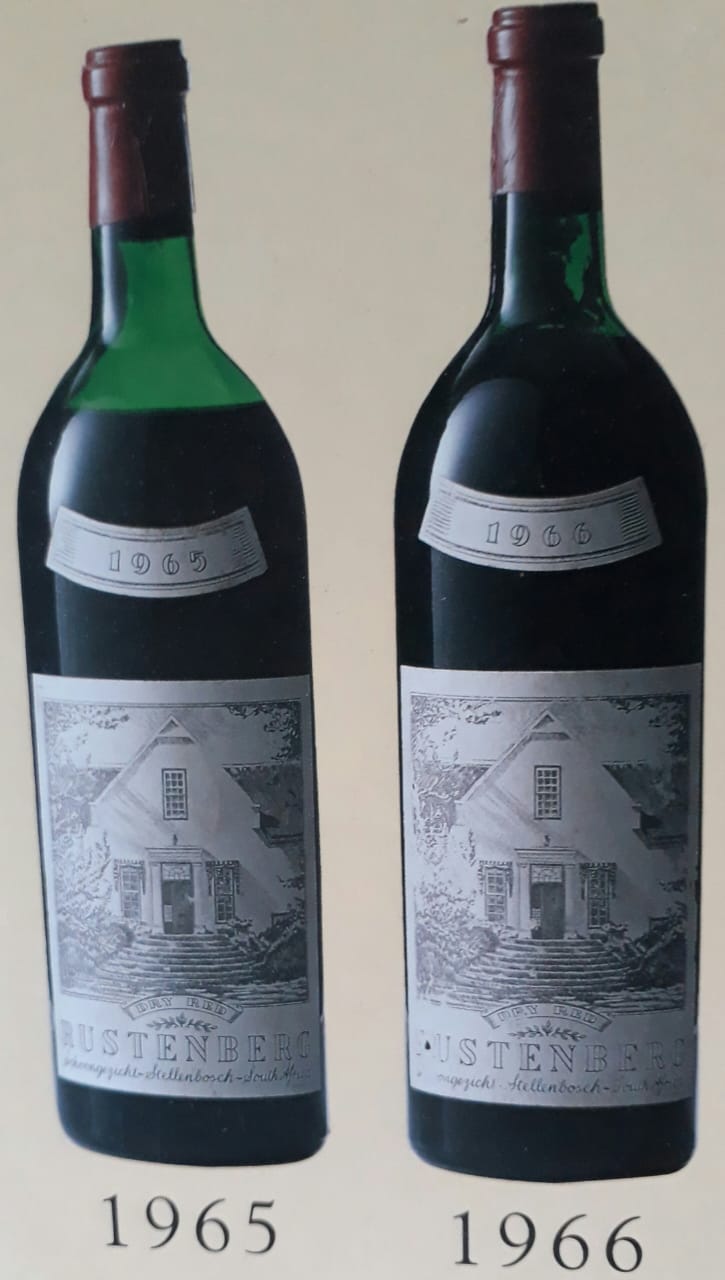Celebrating brand heritage
Milestone birthdays fortunately only come around every decade. And when they do, it’s important to look back and reflect – on how things were and how much they’ve changed.
I had reason to reflect because of a chance remark someone made at the recent launch of the Old Vines Project’s recent heritage seal. Wines which have signed up will now carry a decal which is not just proof of the wine’s claim to having being made from old vine fruit, 35 years or more specifically, but this South African initiative is believed to be the first of its kind in the world.

Bottles still boasting the old ‘bus ticket’ on the neck, Chenin and Cabernet Sauvignon.
But it wasn’t about the decal or seal. What stopped me in my tracks was a comment about the paucity of South African wineries which have been making wines for 50 years or more.
As someone who has written about South African wine for at least the past 25 years, it was startling to think that even as I began, some wine labels were only 20 or 30 years young. It truly was something I’d never actually thought about.
The country’s wine making history is well documented – going back to that diary entry of Jan van Riebeek’s in the 1650’s: “Today, praise be to God, the first grapes were crushed at the Cape of Good Hope...” or words to that effect.
Simonsig recently celebrated its 50th anniversary – and it’s entirely appropriate that it’s one of a virtual handful of wineries to be able to make that claim. Certain brands are well documented – and the one which immediately springs to mind is Chateau Libertas which is fast approaching 90! However, that wine and others in the KWV stable, for example, were commercial brands. My mind wrestled with the labels and brands not attached to corporates. Excluding those and the co-operative wineries made the list a very short one. How many were there and what were they?

The man behind the establishment of the Simonsig label – Oom Frans Malan.
Prior to 1968 – the 50 year threshold – there were precious few private labels or brands, literally a handful. Alto started bottling its own wine in 1933, but the Joubert family of Spier had done so since 1930.
Rustenberg predated them both with the 1990 Platter Guide stating that it had been bottling “since about 1900”. The slopes of the Simonsberg boasted Muratie “since the 1920’s” while Delheim was started in 1954.

Stellenbosch’s Rustenberg Dry Red from the Swinging 60’s!
The year immediately after the cessation of global hostilities – 1946 – saw Tulbagh’s NC Krone start up Twee Jongegezellen while Theuniskraal, another Tulbagh producer, started up in the 1930’s.
The first bottling of Backsberg was in 1948 – as was one other well-known name: Bellingham which coincidentally gave the country its first ever rosé in 1949. Uitkyk has been in the news in the past few weeks since it was announced that Distell has sold it – but its first commercial label appeared in 1946.
Lanzerac has contributed in no small measure to the serious esteem South Africa currently commands amongst international tasting cognoscenti – because of the quality of its old wines from the 50’s and 60’s. Its first bottling was in 1959.
Although there is little doubt about its vine growing and winemaking heritage,Groot Constantia appeared on labels in 1960. Simonsig was 1968 and Meerendal of Durbanville was in 1969 – the year that man first set foot on the moon! Hartenberg is another one which began in the late 1960’s.
It’s broadly acknowledged that a lot of the excitement being generated by South African producers is being done by a handful of enthusiastic young producers, whose brands are just a few years and possibly a decade old. But they’re building on a legacy which is still quite young in the grander scheme of things. Especially if you consider that venerable names such as Kanonkop (1973), Allesverloren (1972) and Meerlust (1975) – or Vergelegen (1992), Thelema (1987), Rust en Vrede (1979) haven’t really been around that long. And even Boschendal only began bottling in the 80’s!
.jpg)
Was it any surprise then that the creative forces behind Spier, Delheim and Simonsig banded together in 1971 to create the country’s first ever wine route in Stellenbosch, primarily to market their products directly? That little spark ultimately contributed to the development and enactment of wine of origin legislation in 1973.
And the rest, as they say in the classics, is history! Albeit fairly recent history...
- Fiona McDonald